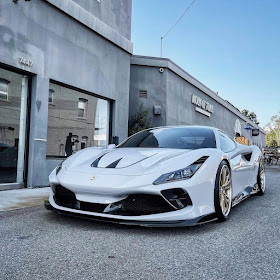Enclosed vs. Open Car Transport: Which Is Best?
When it comes to shipping a car, one of the most crucial decisions you’ll make is choosing between Enclosed transport and Open transport. Each method has its pros and cons, and the best choice depends on your vehicle, budget, and personal preferences. In this article, we’ll dive into the details of both options, helping you decide which is best for your car shipping needs.
What Is Open Car Transport?
Open car transport is the most common and widely used method for shipping vehicles. It involves transporting cars on an open trailer, typically a two-level truck that can carry up to 10 vehicles at a time.
Benefits of Open Car Transport
Cost-Effective:
Open transport is more affordable than enclosed transport because it’s more widely available and can carry multiple vehicles at once.
It’s ideal for individuals looking for budget-friendly solutions without compromising on reliability.
Higher Availability:
Since open carriers are the industry standard, they are easier to find, and scheduling is more flexible.
Suitable for Most Vehicles:
Standard vehicles, including sedans, SUVs, and light trucks, can be safely shipped via open transport without issues.
Drawbacks of Open Car Transport
Exposure to Elements:
Cars on open trailers are exposed to weather conditions, such as rain, snow, and hail.
They are also susceptible to dust, dirt, and road debris.
Limited Privacy:
Vehicles are visible to anyone on the road, which might concern owners of high-value or luxury cars.
What Is Enclosed Car Transport?
Enclosed car transport involves shipping vehicles in a fully enclosed trailer, providing maximum protection from external elements. These trailers typically carry fewer cars—between 1 and 7—ensuring more personalized handling.
Benefits of Enclosed Car Transport
Maximum Protection:
Enclosed transport shields vehicles from weather, road debris, and other external factors.
This method is ideal for classic, exotic, or luxury vehicles that require extra care.
Enhanced Security:
Vehicles are not visible to the public, reducing the risk of theft or unwanted attention.
Specialized Handling:
Enclosed carriers often provide a higher level of care, with drivers experienced in handling high-value vehicles.
Insurance Coverage:
Many enclosed transport providers offer higher insurance coverage, giving peace of mind to owners of expensive cars.
Drawbacks of Enclosed Car Transport
Higher Cost:
Enclosed transport is more expensive due to the additional protection and specialized services provided.
Prices can range from 30% to 60% more than open transport.
Limited Availability:
There are fewer enclosed carriers available, which can result in longer wait times for scheduling.
Smaller Capacity:
Enclosed trailers carry fewer vehicles, which can impact scheduling and delivery times.
When to Choose Open Car Transport
Open car transport is the best choice if:
You’re Shipping a Standard Vehicle:
Most everyday cars can be safely transported on an open trailer without any issues.
You’re on a Budget:
Open transport is a cost-effective option, making it ideal for those looking to save on shipping costs.
Time is a Priority:
With more availability, open carriers are easier to schedule, often resulting in faster delivery.






Comments
Post a Comment